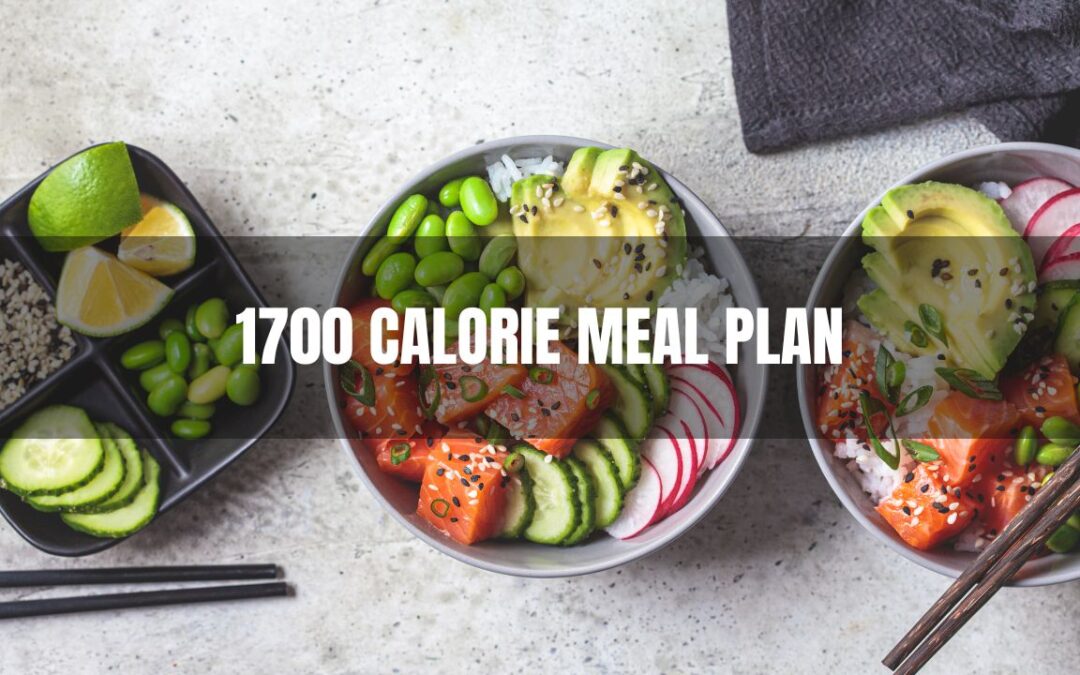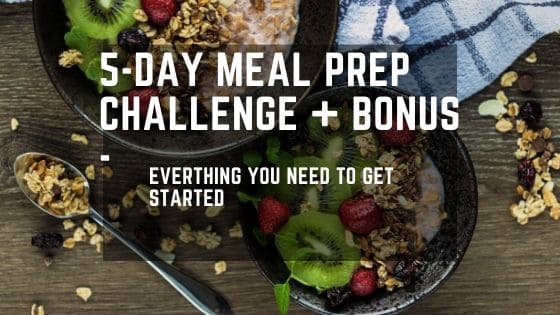Last Updated on March 26, 2024 by TheMealPrepNinja
Are you looking for a meal plan that combines nutrition high protein, flavor, and convenience? Introducing the balanced 1700 calorie meal plan, a perfect fit for individuals seeking a healthy way to manage their weight and support their overall well-being.
Contrary to popular belief, healthy eating doesn’t have to be complicated or restrictive. By following a balanced meal plan like the 1700 calorie diet, you can enjoy a wide variety of delicious foods while still achieving your health goals.
In this article, I will guide you through the ins and outs of the 1700 calorie meal plan and show you how it can be customized to suit your personal preferences and dietary needs. You’ll learn about the nutritional composition, food choices, portion control, and even strategies for dealing with cravings.
So, if you’re ready to embark on a journey towards a healthier you, let’s dive into the world of balanced eating with the 1700 calorie meal plan!
- Discover the importance of maintaining a balanced diet for optimal nutrition and weight management
- Learn how to create a personalized 1700 calorie meal plan that caters to your tastes
- Explore the macronutrient ratios and nutrient-dense foods that make up a healthy eating plan
- Get practical tips for meal prepping, portion control, and dealing with cravings
- Uncover the benefits of the 1700 calorie meal plan for weight management and long-term sustainability
Understanding the 1700 Calorie Meal Plan
In this section, I will provide an overview of the 1700 calorie meal plan and its purpose. I will explain the basics of calorie counting and its role in weight loss. Additionally, I will emphasize the importance of individualized meal planning to create the perfect plan for a sustainable diet that aligns with personal preferences and dietary needs.
The Basics of Calorie Counting and Weight Loss
Counting calories is a fundamental aspect of weight loss. By understanding the number of calories consumed and burned, individuals can create a calorie deficit, which leads to weight loss. Each person’s calorie needs vary based on factors such as age, gender, weight, and activity level.
Calorie counting involves tracking the number of calories consumed from food and beverages throughout the day. This method helps individuals become more aware of their eating habits and make healthier choices. By focusing on portion control and selecting nutrient-dense foods, individuals can create a calorie deficit and achieve their weight loss goals.
However, it is important to note that calorie counting alone is not sufficient for long-term weight management. It should be combined with other healthy lifestyle habits, such as regular exercise and mindful eating, for sustainable results.
Individualized Meal Planning: Key to a Sustainable Diet
While a 1700 calorie meal plan serves as a helpful guideline, it is essential to tailor it to individual needs and preferences. Individualized meal planning allows for flexibility and ensures a sustainable diet that can be maintained in the long run.
An individualized meal plan takes into account personal dietary restrictions, food preferences, and cultural considerations. It allows individuals to create a diet that suits their lifestyle and promotes enjoyment of food while achieving their weight loss goals.
Consulting with healthcare providers or registered dietitians is beneficial when creating an individualized meal plan. They can provide expert guidance and ensure that the diet plan meets the individual’s nutritional needs.
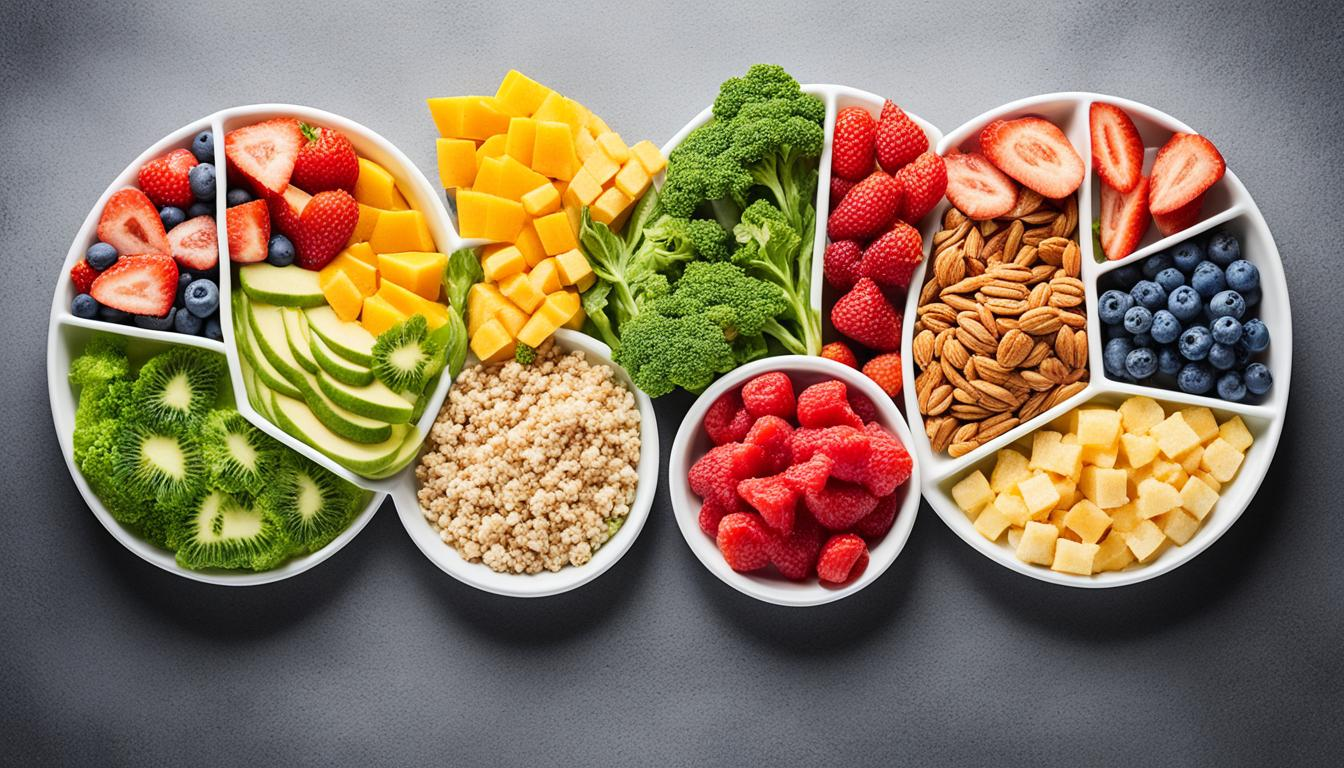
Nutritional Composition of a Balanced 1700 Calorie Diet
When following a balanced 1700 calorie diet, it is essential to understand the nutritional composition of your meals. This knowledge allows you to make informed choices about the macronutrient ratios and select nutrient-dense foods that provide the necessary vitamins, minerals, and antioxidants for optimal health.
Macronutrient Ratios for Optimal Health
Macronutrients, including carbohydrates, proteins, and fats, are the building blocks of a healthy diet. The ratios of these macronutrients play a crucial role in maintaining overall health and achieving weight management goals.
Here are three eggs and the recommended macronutrient ratios for a balanced 1700 calorie diet:
Macronutrient Ratio Calories per Gram Carbohydrates 45-65% of total calories 4 calories per gram Proteins 10-35% of total calories 4 calories per gram Fats 20-35% of total calories 9 calories per gram
These ratios ensure that you receive the right balance of nutrients to support bodily functions, maintain muscle mass, and promote satiety.
Selecting Nutrient-Dense Foods for Your Meals
In addition to considering macronutrient ratios, it is vital to choose nutrient-dense foods that provide a wide range of essential nutrients. Nutrient-dense foods are rich in vitamins, minerals, and antioxidants while being relatively low in calories.
Some examples of nutrient-dense foods include:
- Leafy greens, such as spinach and kale
- Colorful fruits and vegetables
- Lean proteins, like chicken breast and fish
- Whole grains, such as quinoa and brown rice
- Healthy fats, including avocados and nuts
These foods not only provide essential nutrients but also offer a variety of flavors and textures to make your meals enjoyable.
By understanding the nutritional composition of a balanced 1700 calorie diet, you can create meals that support your health goals while ensuring adequate nutrient intake. Remember to consult with a healthcare provider or registered dietitian for personalized guidance and recommendations.
Creating a Weekly Meal Plan with a Variety of Food Groups
When following a balanced 1700 calorie diet, it is essential to create a weekly meal plan that includes a variety of food groups. This not only ensures that you’re getting a range of nutrients and promoting overall health, but it also adds diversity and excitement to your meals.
Here are some tips to help you create a weekly meal plan with a variety of food groups:
- Include vegetables in every meal: Vegetables are packed with essential vitamins, minerals, and fiber. Aim to incorporate a variety of colorful vegetables, such as leafy greens, bell peppers, carrots, and broccoli, into your meals.
- Add fruits for natural sweetness: Fruits provide natural sweetness and are a great source of vitamins and antioxidants. Include a serving of fresh or frozen fruits in your meals or enjoy them as snacks.
- Incorporate whole grains for fiber and energy: Opt for whole grains like quinoa, brown rice, oats, and whole wheat bread to increase your fiber intake and provide sustained energy throughout the day.
- Choose lean proteins: Include lean sources of protein such as chicken breast, fish, tofu, and legumes. These protein-rich foods help support muscle health and keep you feeling satisfied.
- Don’t forget healthy fats: Incorporate sources of healthy fats like avocados, nuts, seeds, and olive oil. These fats add flavor to your meals and provide essential nutrients.
Meal prepping can also be a helpful strategy when creating a weekly meal plan. It allows you to save time during busy weekdays and ensures that you have nutritious meals readily available.
Remember to practice portion control when planning your meals. Pay attention to recommended serving sizes to avoid overeating and maintain a balanced calorie intake.
By creating a weekly meal plan with a variety of food groups, you can enjoy a delicious and nutritionally balanced diet while achieving your health goals.
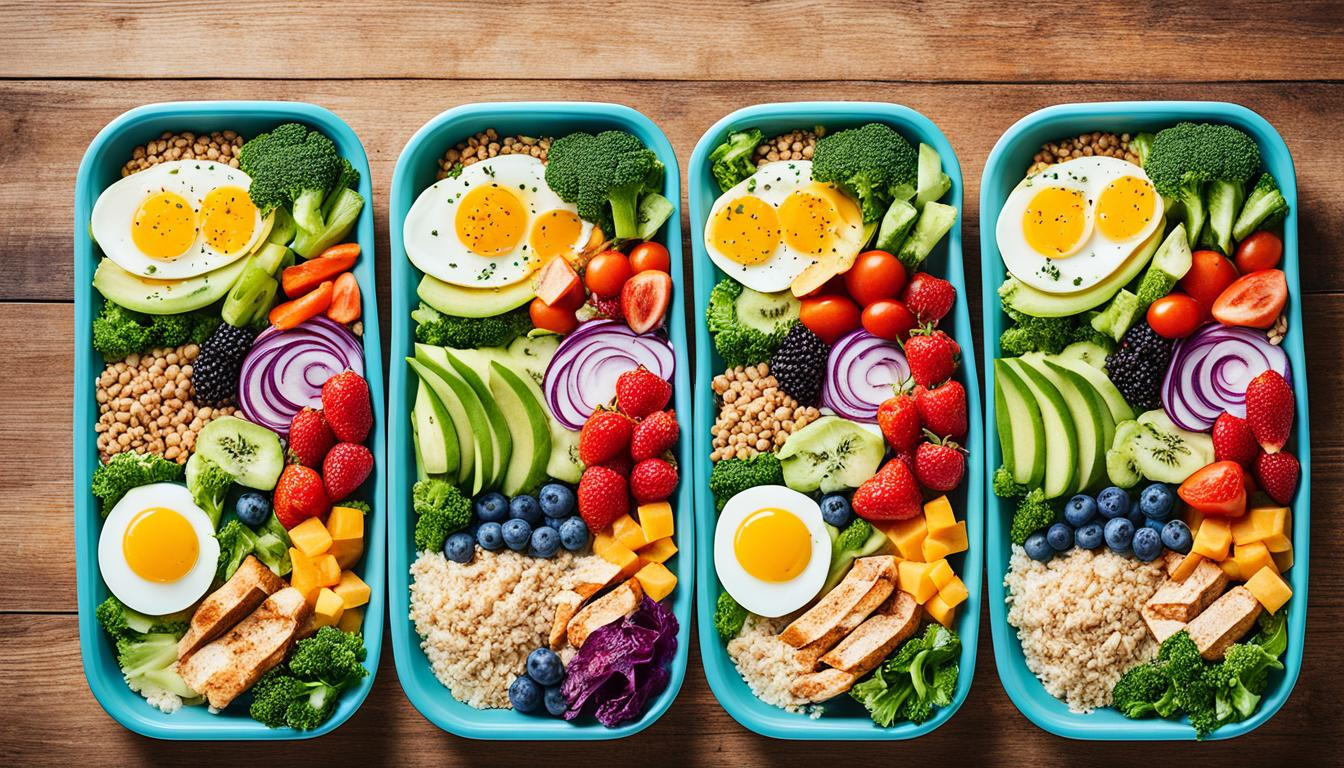
Healthy Eating Strategies Without Feeling Deprived
When it comes to maintaining a healthy lifestyle, it’s essential to develop strategies that promote long-term success without sacrificing enjoyment. Incorporating healthy fats and lean proteins into your meals can provide numerous benefits. These nutrient-rich foods not only support satiety but also contribute to overall well-being. Additionally, learning to deal with cravings and allowing yourself room for treats in moderation are key components of a balanced approach to healthy eating.
Incorporating Healthy Fats and Lean Proteins
Healthy fats and lean proteins play crucial roles in our diet. Healthy fats, such as those found in avocados, nuts, and olive oil, help maintain healthy cholesterol levels and support brain function. Lean proteins, such as chicken breast, fish, and legumes, are essential for muscle growth and repair.
To incorporate healthy fats and lean proteins into one slice your meals:
- Add avocado slices to your salads or use guacamole as a dip.
- Include a serving of nuts as a snack or sprinkle them on top of yogurt or smoothies.
- Choose lean sources of proteins like grilled chicken or fish for your main dishes.
- Experiment with plant-based protein sources like tofu, lentils, or quinoa.
“By incorporating healthy fats and lean proteins into your meals, you can promote satiety and nourish your body with essential nutrients.”
Dealing with Cravings and Making Room for Treats
Cravings are a normal part of life, and it’s important to find healthy ways to manage them. Here are some strategies:
- Identify the root cause of your cravings. Are they driven by emotions, stress, boredom, or genuine hunger?
- Keep a food journal to track your cravings and identify patterns.
- Find healthier alternatives for your cravings. For example, if you crave sweets, opt for a piece of dark chocolate or a fruit-based dessert.
- Practice mindful eating by savoring each bite. This helps you feel more satisfied and can prevent overeating.
Remember, incorporating treats in moderation is a sustainable approach to healthy eating. Denying yourself completely may lead to feelings of deprivation, which can result in overindulgence later on. Enjoying your favorite treats occasionally can help you stay motivated and prevent feelings of restriction.
By integrating healthy fats and lean proteins into your meals and finding strategies to deal with cravings, you can develop a healthy eating plan that supports your goals without making you feel deprived. Remember, balance and moderation are key to long-term success.
Customizing Your 1700 Calorie Meal Plan
When following a 1700 calorie meal plan, it is important to customize it according to your food preferences and dietary restrictions. By making a few simple adjustments, you can create a meal plan that suits your needs and helps you achieve your health goals. Here are some tips to help you customize your meal plan:
Food Preferences and Substitutes
Take into consideration your food preferences when planning your meals. If you don’t enjoy certain foods or have dietary restrictions, look for suitable substitutes that provide similar nutritional benefits. For example, if you don’t like broccoli, you can substitute it with other green vegetables like spinach or kale. If you’re lactose intolerant, you can choose dairy-free alternatives like almond milk or soy milk.
Customizing your meal plan to accommodate your food preferences can make it more enjoyable and sustainable in the long run.
Portion Control and Serving Sizes
To ensure you stay within your 1700 calorie goal, it is important to practice portion control and pay attention to serving sizes. Use measuring cups or a kitchen scale to accurately measure your portions. It can be helpful to create a visual guide using common household items. For example, a serving of protein should be about the size of a deck of cards, while a serving of carbohydrates should be about the size of a tennis ball.
If you find it challenging to gauge portion sizes, you can use smaller plates and bowls to create the illusion of a fuller plate. Additionally, practice mindful eating by savoring each bite and paying attention to your body’s hunger and fullness cues.
By customizing your meal plan and being mindful of portion control, you can tailor your 1700 calorie meal plan to suit your needs and preferences while still achieving your health goals.
“1700 calorie meal plan”: A Day’s Worth of Meals and Snacks
Following a balanced 1700 calorie meal plan can help you achieve your health and weight management goals. Here’s a sample plan for a day’s worth of meals and snacks that provide adequate nutrition and variety:
Breakfast: Avocado Toast with Egg
- Ingredients: 1 slice of whole grain bread, 1/2 avocado, 1 cooked egg, salt, pepper, and chili flakes to taste.
- Calories: Approximately 300
Morning Snack: Greek Yogurt with Honey and Almonds
- Ingredients: 1 cup of plain Greek yogurt, 1 tablespoon of honey, 10 almonds.
- Calories: Approximately 200
Lunch: Grilled Chicken Salad
- Ingredients: 100g grilled chicken breast, mixed greens (spinach, arugula, lettuce), cherry tomatoes, cucumber, 1/4 cup of quinoa, 1 tablespoon of olive oil, and lemon juice dressing.
- Calories: Approximately 400
Here is one of my favorite low calorie meal prep lunch recipes.
Afternoon Snack: Carrot and Cucumber Sticks with Hummus
- Ingredients: 1/2 cup of hummus, 1 large carrot, 1 large cucumber.
- Calories: Approximately 200
Dinner: Salmon with Sweet Potato and Broccoli
- Ingredients: 150g grilled salmon, 1 medium sweet potato (baked), 1 cup of steamed broccoli, a drizzle of olive oil, salt, and pepper to taste.
- Calories: Approximately 500
Evening Snack: Berries and Nuts
- Ingredients: 1/2 cup of mixed berries (blueberries, strawberries), 15g of mixed nuts (walnuts, almonds).
- Calories: Approximately 100
Remember to drink plenty of water throughout the day to stay hydrated. This sample meal plan provides a balanced distribution of macronutrients and includes a variety of whole foods to ensure you eat and are getting the essential nutrients you need.
Shopping and Prepping for Your Low Calorie Diet
When it comes to following a low calorie diet, proper shopping and meal prepping are essential for success. By being prepared and organized, you can save time, avoid temptation, and ensure that you have the necessary ingredients on hand to create nutritious meals. Here are some tips to help you navigate the aisles and streamline your meal prep process.
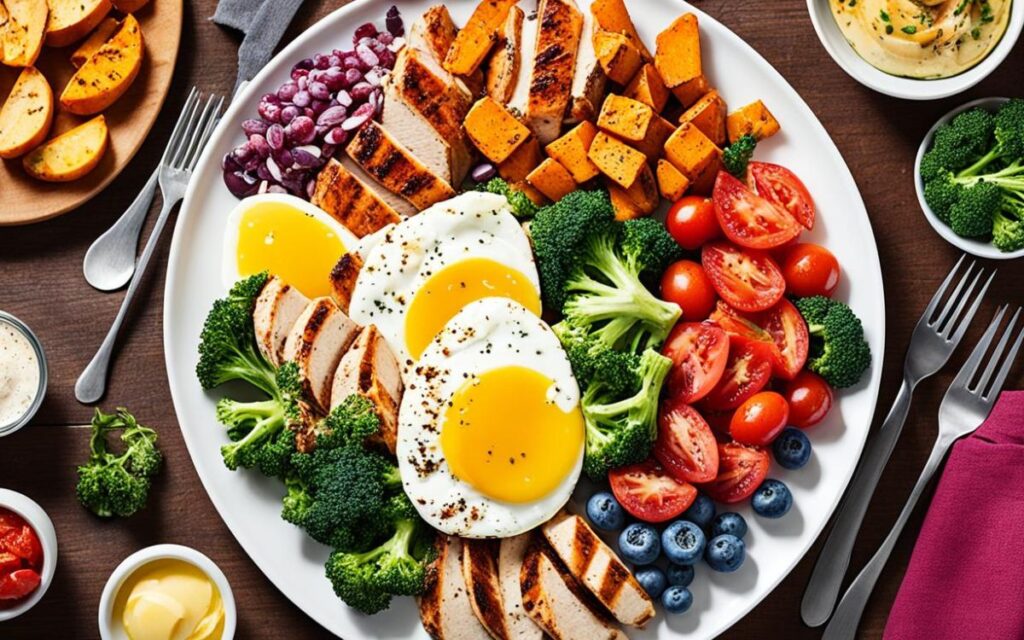
Efficient Grocery Lists for a 1700 Calorie Diet
Creating a well-planned grocery list is the first step in efficient shopping for your low calorie diet. With a clear plan in mind, you can avoid impulse purchases and make sure you have everything you need for your meals. Here are some strategies for building your grocery list:
- Plan your meals in advance: Take the time to plan out your meals for the week and determine the ingredients you’ll need for each recipe. This will help you create a comprehensive shopping list.
- Stick to the perimeter of the grocery store: The outer aisles of the store are typically where you’ll find fresh produce, lean proteins, and dairy products. Focus on these areas to fill your cart with nutritious options.
- Choose whole, unprocessed foods: Opt for whole grains, fresh fruits and vegetables, and lean proteins. These foods are nutrient-dense and will help you stay satisfied while keeping your calorie intake in check.
- Consider pre-cut and frozen options: If time is a constraint, don’t be afraid to choose pre-cut fruits and vegetables or frozen options. These can save you time in the kitchen without sacrificing nutrition.
By following these tips, you can create an efficient grocery list that aligns with your 1700 calorie diet and sets you up for success.
Meal Prep Tips to Save Time and Avoid Temptation
Meal prepping is a valuable tool in maintaining a low calorie diet. By preparing your meals in advance, you can save time during the week and minimize the risk of giving in to temptation. Here are some meal prep tips:
- Set aside time for meal prep: Dedicate a specific day or time each week to meal prep. This will ensure that you have enough time to cook and portion out your meals.
- Cook in bulk: Prepare large batches of your favorite low calorie recipes and portion them out into individual meal containers. This way, you’ll have grab-and-go options readily available.
- Invest in quality storage containers: Look for containers that are microwave-safe and easy to stack in your fridge or freezer. Having the right containers can make meal prep more efficient and keep your food fresh.
- Pre-cut and portion ingredients: Wash, chop, and portion out ingredients ahead of time to make meal assembly quick and easy. This can be especially helpful for snacks and salads.
- Store snacks in single servings: To avoid mindless snacking, portion out your snacks into individual servings and store them in easily accessible containers. This will help you stay on track with your low calorie diet.
By implementing these three meals and meal prep tips, you can save time, stay organized, and resist the temptation of unhealthy food choices.
Following a low calorie diet doesn’t have to be overwhelming. With efficient shopping strategies and smart, meal plans and prepping, you can set yourself up for success on your journey to a healthier lifestyle. By staying committed to your goals and maintaining a positive mindset, you can achieve lasting results.
Benefits of a 1700 Calorie Diet for Weight Management
Following a 1700 calorie diet can offer numerous benefits when it comes to weight loss diet and management. By consistently consuming a controlled number of calories, individuals can achieve a calorie deficit, which is crucial for weight loss. Let’s explore how this type of diet helps in achieving weight management goals and how to maintain muscle mass while reducing calories.
Achieving a Calorie Deficit for Weight Loss
Creating a calorie deficit is essential for weight loss as it means consuming fewer calories than your body needs to maintain its current weight. By following a 1700 calorie diet, you can ensure that you are in a calorie deficit, which prompts your body to use stored fat for energy, resulting in weight loss over time. This type of diet allows you to control and monitor your calorie intake, making it easier to reach your weight loss goals.
Maintaining Muscle Mass While Reducing Calories
One concern with reducing calorie intake is the potential loss of muscle mass. However, by following a balanced 1700 calorie diet and incorporating regular exercise, you can help preserve your muscle mass while successfully losing weight. Including an adequate amount of protein in your diet is crucial as it supports muscle maintenance and repair. Additionally, engaging in strength training exercises can help stimulate muscle growth and minimize muscle loss.
By following a 1700 calorie diet, you can effectively manage your weight while maintaining muscle mass, improving overall body composition, and promoting long-term weight management success.
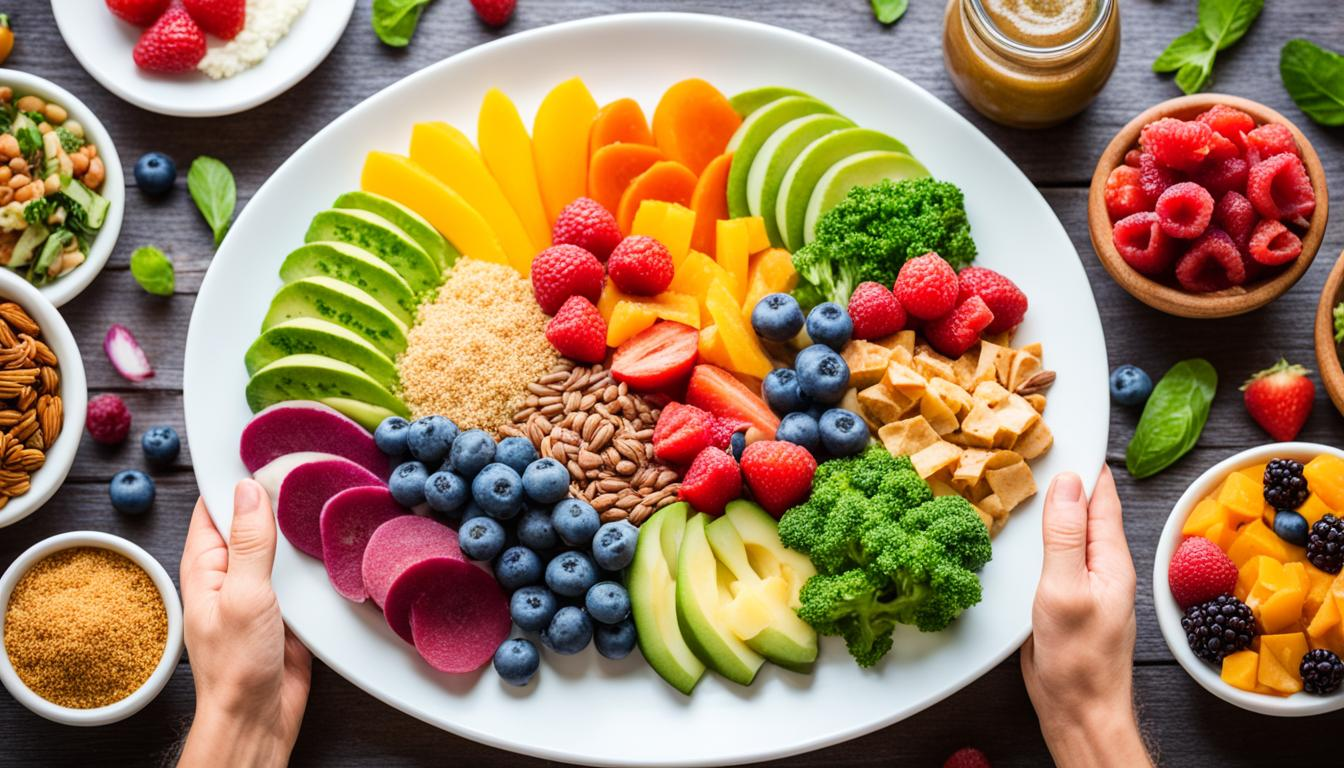
Hydration and Its Importance
Proper hydration is essential for maintaining optimal health in a balanced 1700 calorie meal plan. Staying hydrated helps support various bodily functions and can have a positive impact on overall well-being. To ensure you are adequately hydrated, it is crucial to understand the recommended daily water intake and the benefits of hydration.
Recommended Daily Water Intake: The amount of water you need to drink each day can vary depending on factors such as body weight, physical activity level, and climate. As a general guideline, the National Academies of Sciences, Engineering, and Medicine recommend a daily water intake of about 3.7 liters (125 ounces) for men and 2.7 liters (91 ounces) for women. However, individual water needs may differ, so it is important to listen to your body and adjust accordingly.
Benefits of Staying Hydrated: Hydration plays a critical role in several bodily functions, including digestion, nutrient absorption, circulation, and temperature regulation. By staying hydrated, you can experience the following benefits:
- Improved energy levels and mental clarity
- Enhanced physical performance
- Promoted healthy digestion
- Boosted metabolism
- Support of optimal organ function
- Regulated body temperature
- Flushed out toxins and waste products
Remember that water is the best source of hydration, but you can also get fluids from other beverages and water-rich foods like fruits and vegetables. Be sure to monitor your fluid intake throughout the day and prioritize drinking water with your meals and snacks.
Proper hydration is the key to maintaining overall health and well-being in a balanced 1700 calorie meal plan.
Benefits of Staying Hydrated Improved energy levels and mental clarity Enhanced physical performance Promoted healthy digestion Boosted metabolism Support of optimal organ function Regulated body temperature Flushed out toxins and waste products
The Role of Exercise in Complementing Your Diet
Exercise plays a vital role in complementing a balanced 1700 calorie meal plan. While diet is crucial for weight management and overall health, incorporating regular physical activity can enhance the effectiveness of your weight loss efforts and contribute to improved well-being. By combining a nutritious diet with exercise, you can achieve optimal results and maintain a healthy lifestyle. Here are some key reasons why exercise is essential:
- Enhances calorie burn: Regular exercise helps increase your overall energy expenditure, allowing you to burn more calories. This can create a calorie deficit, which is necessary for weight loss and weight management.
- Improves metabolic rate: Exercise helps boost your metabolism, allowing your body to efficiently utilize calories for energy. This can support weight loss and prevent weight gain.
- Promotes muscle retention: When combined with a balanced diet, exercise can help preserve muscle mass while losing weight. This is important as muscles are metabolically active tissues that can aid in calorie burning.
- Enhances mood and mental well-being: Exercise releases endorphins, which are known as “feel-good” hormones. Regular physical activity can help reduce stress, improve mood, and enhance mental well-being.
- Increases overall fitness level: Engaging in aerobic, strength training, and flexibility exercises can improve your cardiovascular health, muscle strength, endurance, and flexibility. This can lead to better overall fitness and improved quality of life.
When incorporating exercise into your routine, it’s important to choose activities that you enjoy and that align with your fitness level and goals. It’s recommended to aim for at least 150 minutes of moderate-intensity aerobic exercise or 75 minutes of vigorous-intensity aerobic exercise per week, along with muscle-strengthening activities at least twice a week.
Remember to consult with your healthcare provider or a qualified fitness professional before starting any new exercise program, especially if you have any underlying health conditions. They can provide guidance and recommend appropriate exercises based on your individual needs and abilities.
Exercise Type Description Aerobic Exercise Activities that get your heart rate up and increase breathing, such as brisk walking, jogging, cycling, swimming, and dancing. Strength Training Exercises that target different muscle groups, such as weightlifting, resistance band workouts, and bodyweight exercises. Flexibility Exercises Activities that improve flexibility and range of motion, such as stretching, yoga, and Pilates.
Psychological Aspects of Dieting
Dieting and weight management involve more than just physical changes; they also have significant psychological aspects. It is important to recognize and address these aspects to maintain a positive mindset and overcome psychological barriers. Here are some common challenges and emotions associated with dieting, along with tips for navigating them:
- Feelings of Deprivation: Dieting often involves reducing calorie intake and avoiding certain foods. This can lead to feelings of deprivation and frustration. To combat this, focus on the foods you can eat and find healthy alternatives that are satisfying and enjoyable.
- Social Pressures and Temptations: Social gatherings and events can present challenges when following a diet. It can be difficult to resist temptation or feel pressured to indulge. Prepare in advance by bringing your own nutritious snacks or choosing healthier options at parties.
- Emotional Eating: Emotional triggers, such as stress or boredom, can lead to emotional eating. Learn to identify your triggers and find alternative ways to cope with emotions, such as engaging in activities you enjoy, talking to a supportive friend, or practicing relaxation techniques.
- Body Image and Self-Worth: Dieting can sometimes affect body image and self-esteem. Remember that weight loss does not define your worth as a person. Focus on the positive changes you are making for your health and well-being, rather than solely on the number on the scale.
- Plateaus and Frustration: It is common to experience weight plateaus or slower progress after initial success. Stay motivated by focusing on non-scale victories, such as increased energy levels, improved fitness, or better sleep quality.
- Self-Sabotage and Negative Self-Talk: Negative self-talk can hinder progress and lead to self-sabotage. Challenge negative thoughts and replace them with positive affirmations. Practice self-compassion and celebrate your achievements, no matter how small.
- Motivation and Accountability: Maintaining motivation and accountability can be challenging on a long-term diet. Set achievable goals, track your progress, and seek support from friends, family, or online communities to stay motivated and accountable.
By addressing the psychological aspects of dieting, you can cultivate a positive mindset and overcome common challenges. Remember to be kind to yourself throughout the journey and celebrate every step towards a healthier lifestyle.
Conclusion
In conclusion, the balanced 1700 calorie meal plan is a comprehensive approach to healthy eating and weight management. By following this meal plan, individuals can achieve optimal nutrition and create a sustainable diet that aligns with their personal preferences and dietary needs.
The 1700 calorie meal plan emphasizes the importance of maintaining a balanced diet, which consists of the right macronutrient ratios and nutrient-dense foods. By including a variety of food groups in their weekly meal plan, individuals can ensure they are getting essential vitamins, minerals, and antioxidants.
Throughout the article, I have discussed the benefits of the 1700 calorie meal plan for weight management. By achieving a calorie deficit, individuals can effectively lose weight while still maintaining muscle mass. Additionally, we have highlighted the importance of hydration and regular exercise in complementing the diet plan.
It is important to remember that customization is key when following a 1700 calorie meal plan. By considering individual food preferences, making appropriate substitutes, and practicing portion control, individuals can tailor the meal plan to their liking and ensure adherence to the calorie goal.
FAQ
What is a balanced 1700 calorie meal plan?
A balanced 1700 calorie meal plan is a diet plan designed to provide the right balance of macronutrients and essential vitamins and minerals while keeping the calorie intake at approximately 1700 calories per day. It includes a variety of food groups such as vegetables, fruits, whole grains, lean proteins, and healthy fats to ensure optimal nutrition and support weight management goals.
How does calorie counting help with weight loss?
Calorie counting is a method of tracking and managing the number of calories consumed in a day. By creating a calorie deficit, where you consume fewer calories than your body needs, your body will start using stored fat for energy, resulting in weight loss. Calorie counting helps raise awareness about portion sizes, food choices, and caloric intake, allowing for better control over weight loss efforts.
Can I customize the 1700 calorie meal plan according to my food preferences?
Yes, it is important to personalize the 1700 calorie meal plan to fit your food preferences and dietary restrictions. You can make substitutions based on your likes and dislikes, as long as you stay within the calorie range and maintain a balance of macronutrients. Consulting with a registered dietitian or healthcare provider can provide guidance on how to customize the meal plan according to your specific needs.
How can I stay organized with a weekly meal plan?
Staying organized with a weekly meal plan involves planning your meals and snacks in advance. Start by creating a grocery list based on your weekly meal plans and plan, ensuring you have all the necessary ingredients. Prepare meals in larger batches and portion them out for the week. This will save time and make it easier to stick to your 1700 calorie meal plan without feeling overwhelmed or tempted to deviate from it.
Is it possible to build muscle on a 1700 calorie diet?
It is possible to build muscle on a 1700 calorie diet, especially if you incorporate strength training exercises into your fitness routine. To support muscle growth, focus on consuming adequate protein and engaging in resistance training. Consult with a healthcare provider or registered dietitian to ensure you are meeting your protein needs and receiving proper nutrition while maintaining a calorie deficit for weight loss.
Can I include treats in my 1700 calorie meal plan?
Yes, it is possible to include treats in moderation within your 1700 calorie meal plan. It is important to prioritize nutrient-dense foods to meet your nutritional needs, but enjoying small treats occasionally can help prevent feelings of deprivation and support overall sustainability of your healthy eating habits. It’s all about balance and portion control.
How can I maintain muscle mass while reducing calories?
To maintain muscle mass while reducing calories, focus on consuming an adequate amount of protein in your diet. Protein is essential for muscle repair and growth. Additionally, engaging in regular resistance training exercises can help preserve muscle mass during weight loss. It is recommended to consult with a healthcare provider or registered dietitian for personalized guidance on protein intake and exercise routines.
Can I substitute foods in the meal plan to fit my dietary restrictions?
Yes, you can substitute foods in the meal plan to fit your dietary restrictions. For example, if you have lactose intolerance, you can substitute dairy products with non-dairy alternatives like almond milk or soy milk. It is essential to consult with a registered dietitian or healthcare provider to ensure you are meeting your nutritional needs while making substitutions and to find suitable alternatives for your specific dietary restrictions.
What are some efficient grocery lists for a 1700 calorie diet?
The grocery list for a 1700 calorie diet should include a variety of nutrient-dense foods. Here are some examples: lean proteins (chicken breast, turkey breast, tofu), fruits (berries, apples, bananas), vegetables (spinach, broccoli, bell peppers), whole grains (brown rice, quinoa, whole wheat bread), healthy fats (avocado, olive oil, nuts), and low-fat dairy or alternatives (plain Greek yogurt or nonfat Greek yogurt). Adjust the quantities based on your preferences and portion sizes.
How can I overcome challenges while following a 1700 calorie meal plan?
To overcome challenges while following a 1700 calorie meal plan, it is important to monitor your progress regularly and make adjustments as needed. Recognize that it is normal to face obstacles and setbacks along the way, but staying consistent and committed to your goals will lead to long-term success. Seek support from a healthcare provider, registered dietitian, or support groups to help you stay motivated and accountable.
Can I exercise while following a 1700 calorie meal plan?
Yes, exercise is an important component of a healthy lifestyle and can complement your 1700 calorie meal plan. Regular physical activity can help enhance weight loss efforts, improve overall fitness, and provide numerous health benefits. Incorporate a combination of cardiovascular exercise, strength training, and flexibility exercises to support your weight management goals and overall well-being.
How can I maintain a positive mindset while dieting?
Maintaining a positive mindset while dieting is crucial for long-term success. Focus on the benefits of a balanced 1700 calorie meal plan, such as improved energy levels, health, and overall well-being. Replace negative self-talk with positive affirmations, reward yourself for small achievements, and surround yourself with a supportive environment. Remember that slow progress is still progress, and every step counts towards your goals.
How can I ensure long-term sustainability with a 1700 calorie meal plan?
Long-term sustainability with a 1700 calorie meal plan involves creating habits that can be maintained over time. Make gradual changes to your eating habits and incorporate foods you enjoy in moderation. Focus on the positive effects of a balanced diet on your overall health and well-being. Regularly assess and adjust your meal plan and food choices to keep it interesting and prevent boredom. Seek support from healthcare providers or registered dietitians to help you stay on track and maintain a healthy lifestyle.
We also put together a 3000 calorie meal plan and a 2500 calories meal plan.

Jim Lopez, the founder and editor of The Meal Prep Ninja, shares his journey from a passionate bodybuilder and fitness enthusiast to a certified nutrition coach. Certified by Precision Nutrition, Jim aims to empower others with knowledge on meal prep and nutrition, offering resources for busy individuals to enjoy low-calorie, tasty foods. His blog is a community for sharing healthy eating habits and meal prep recipes

